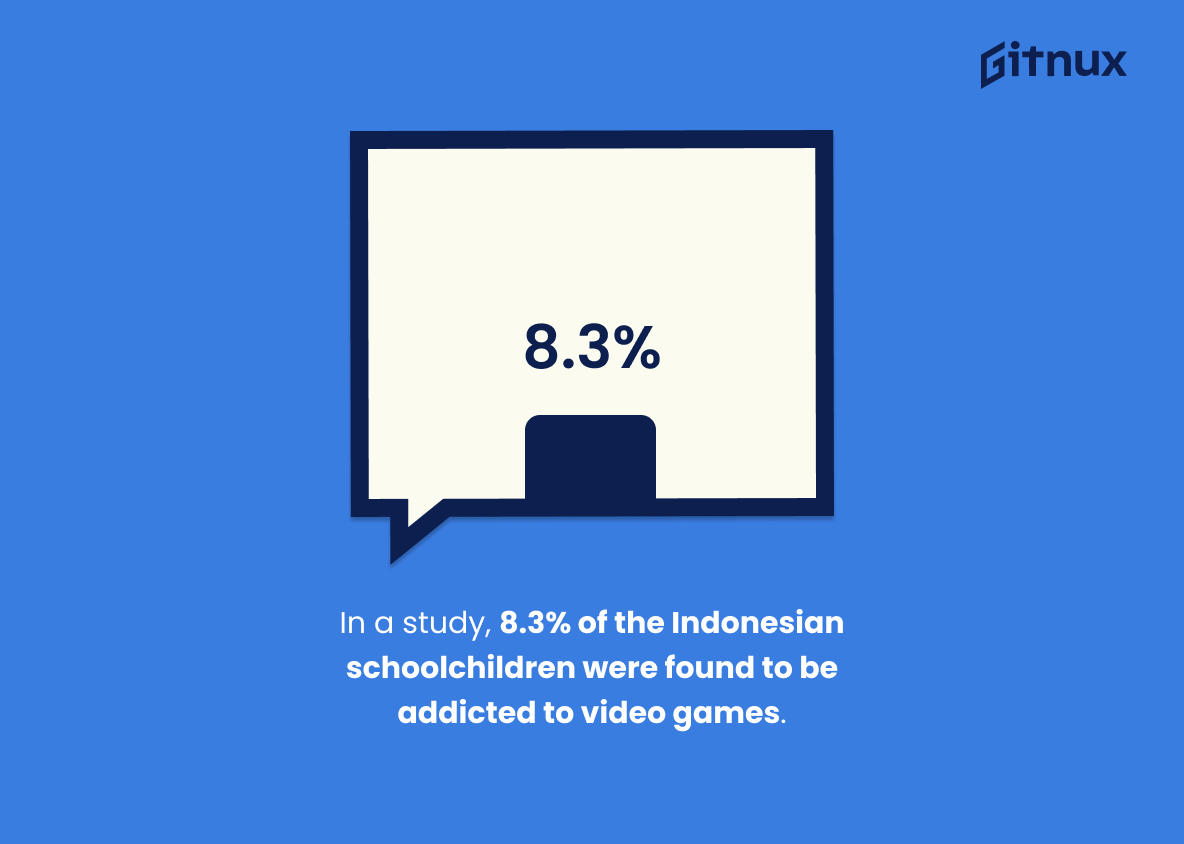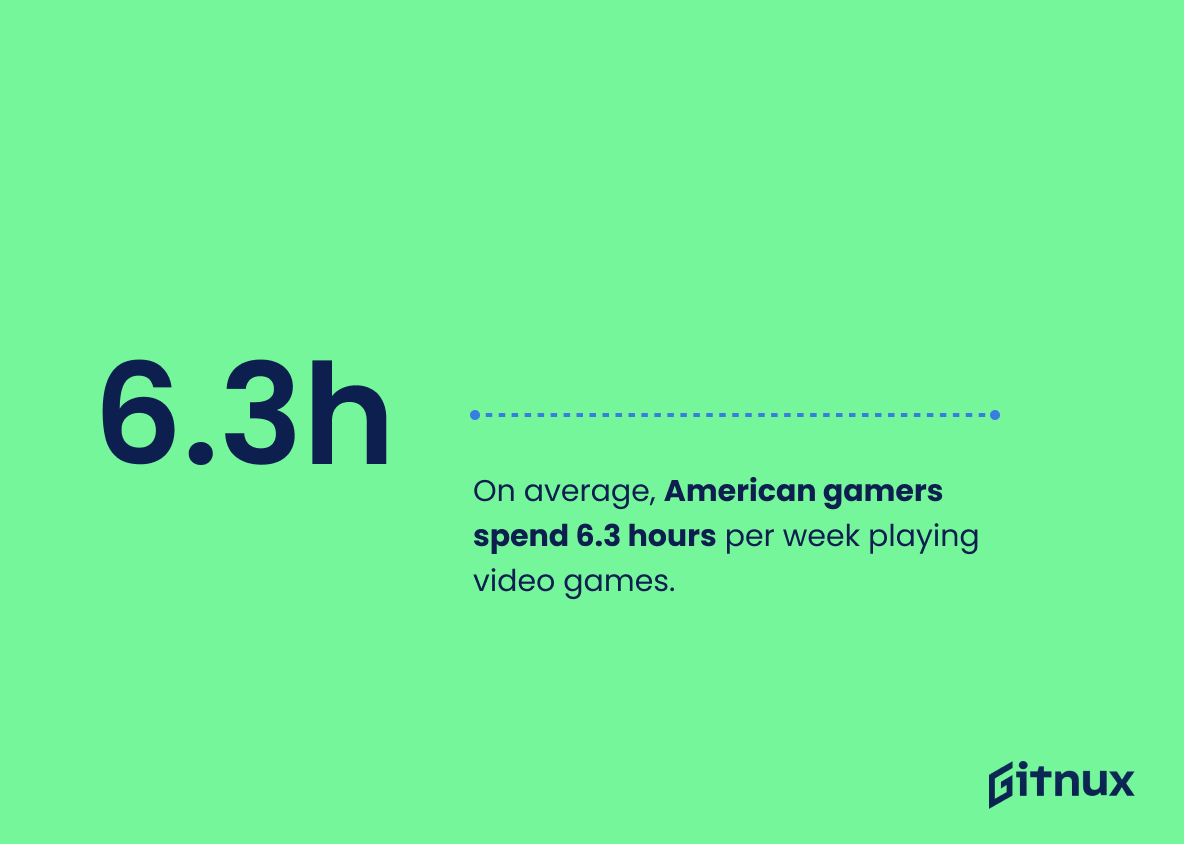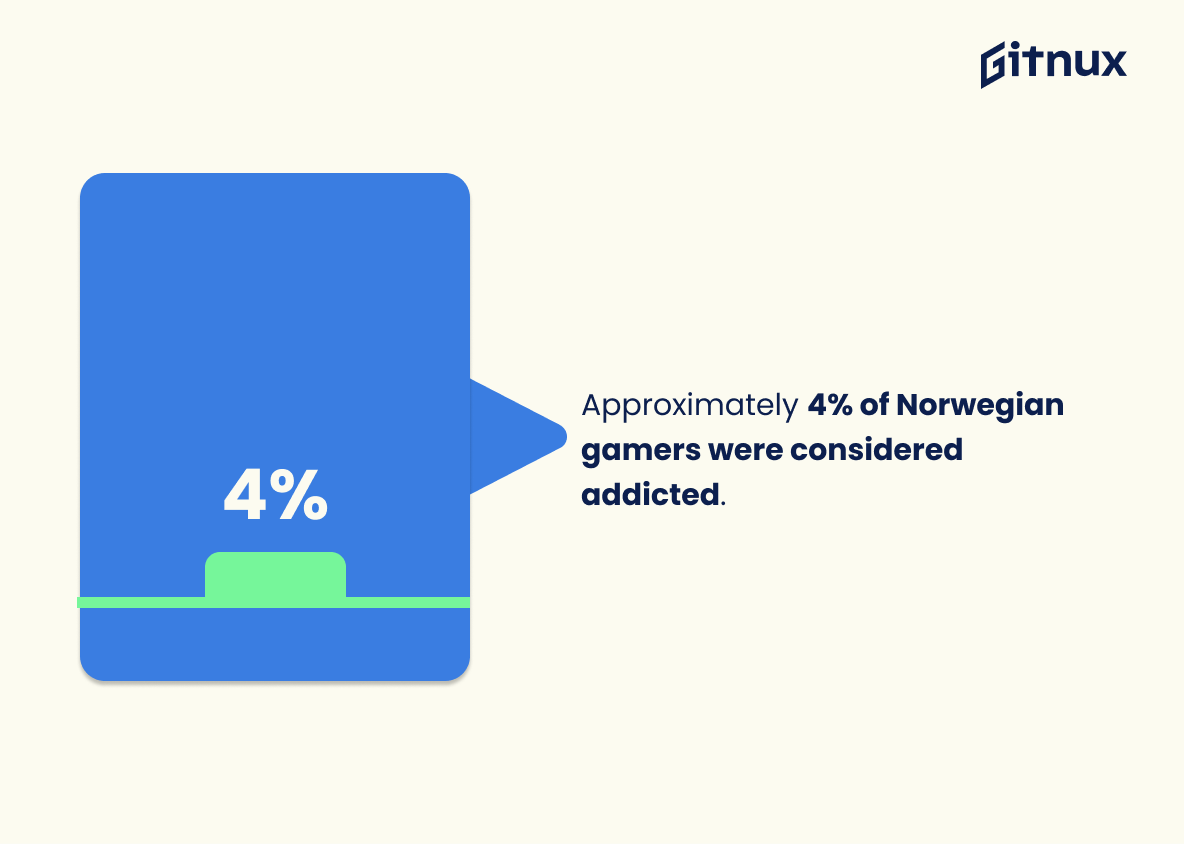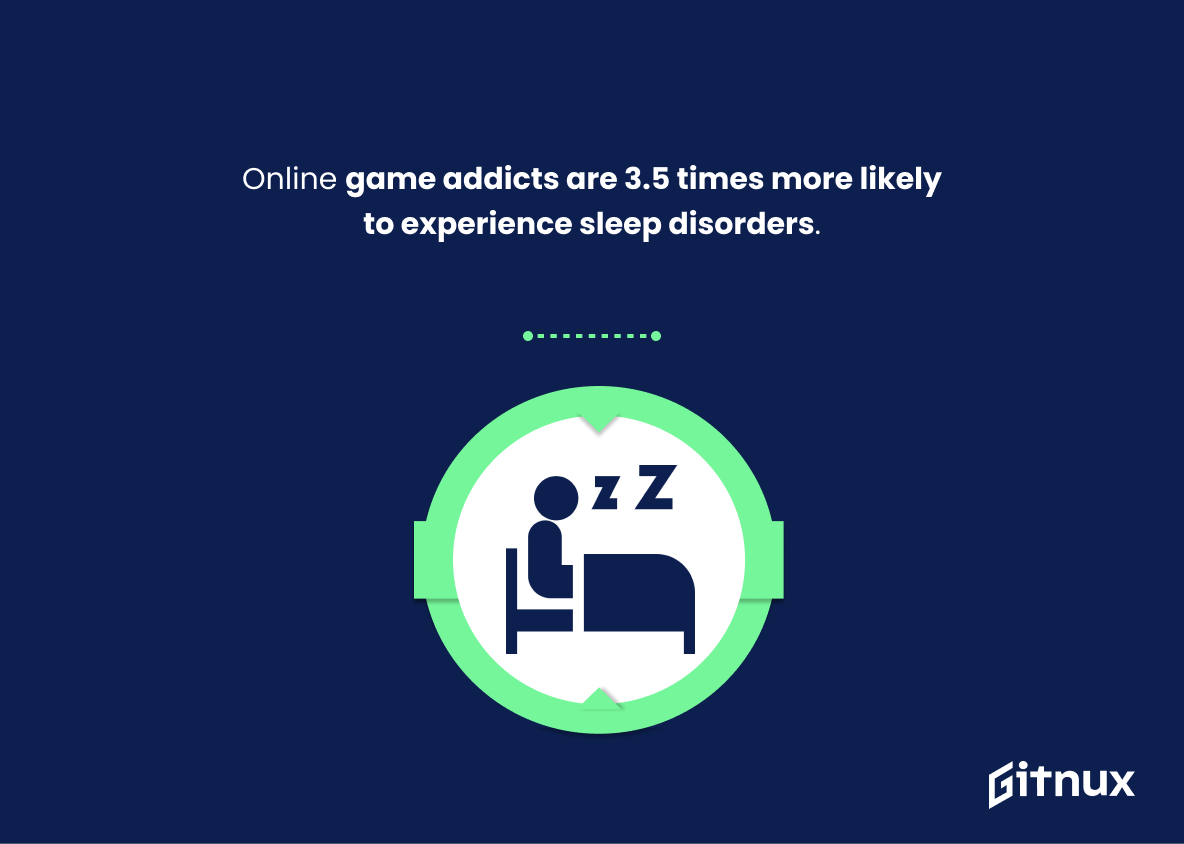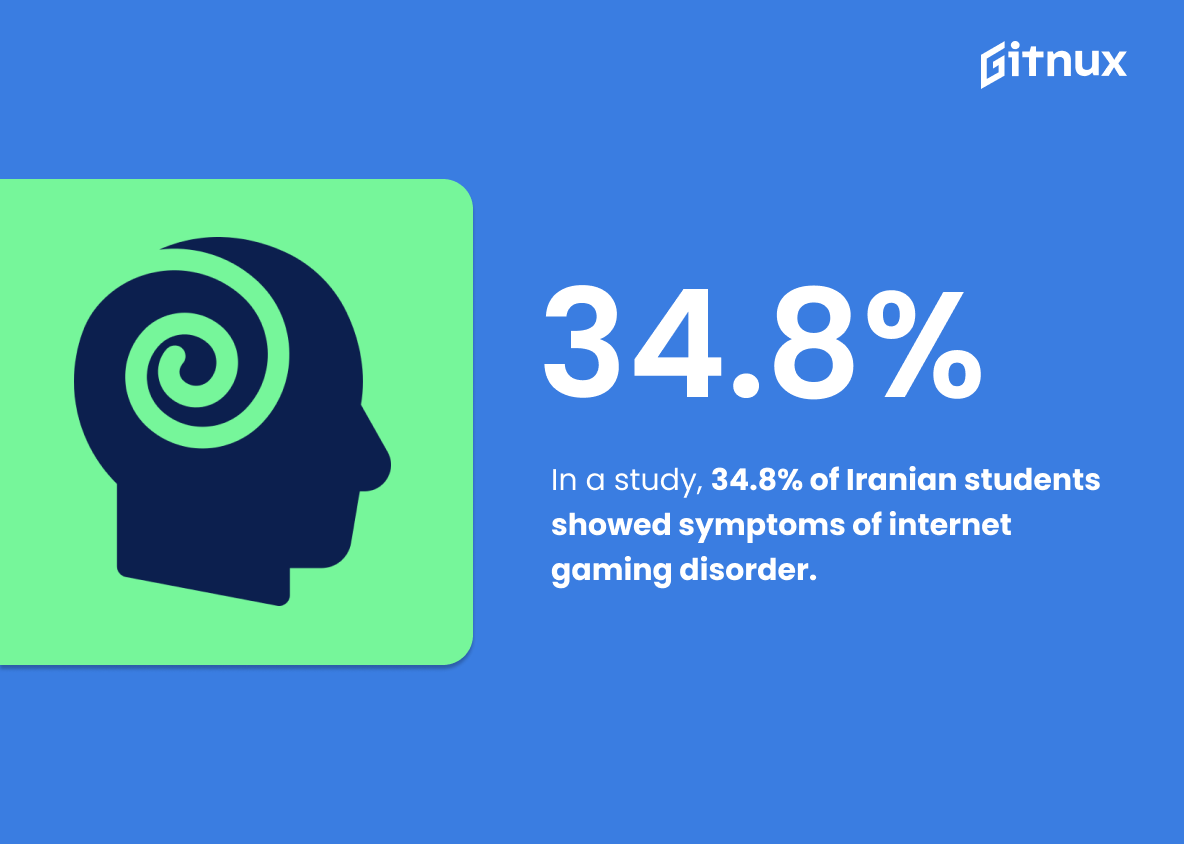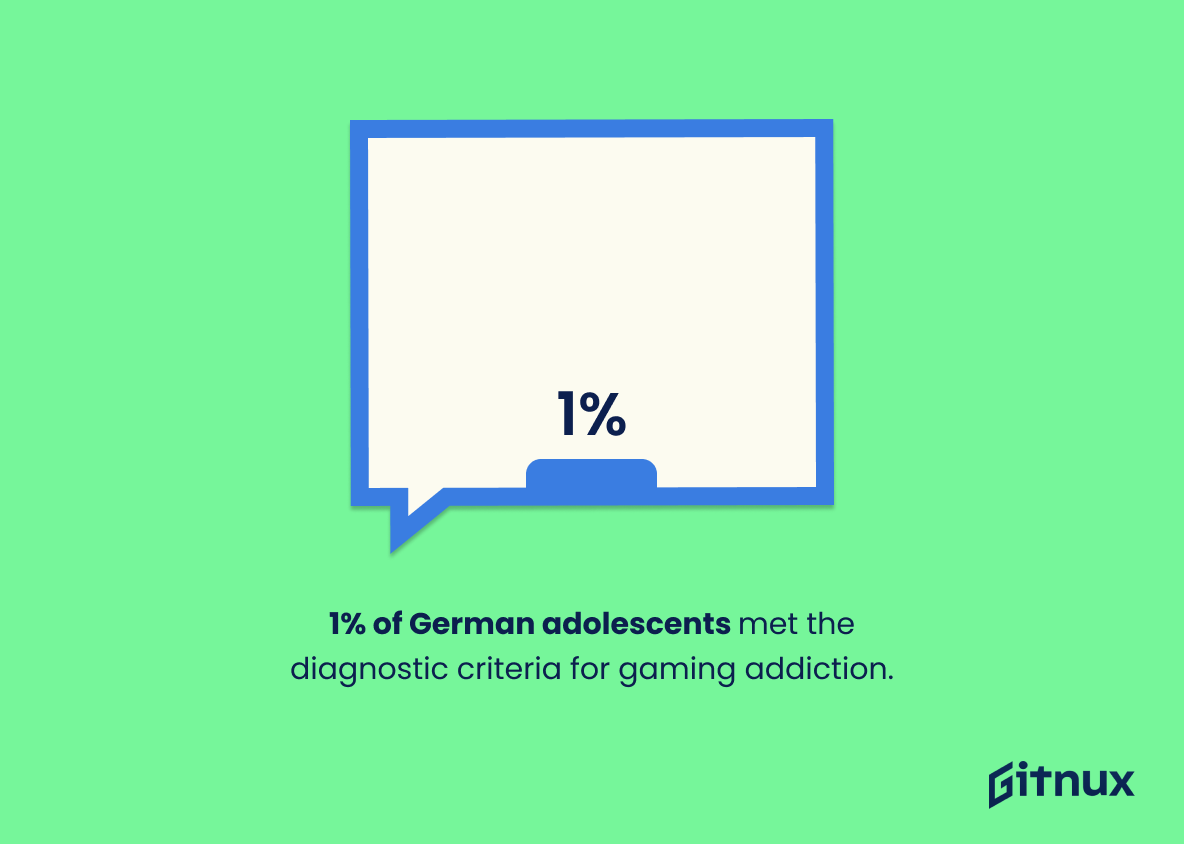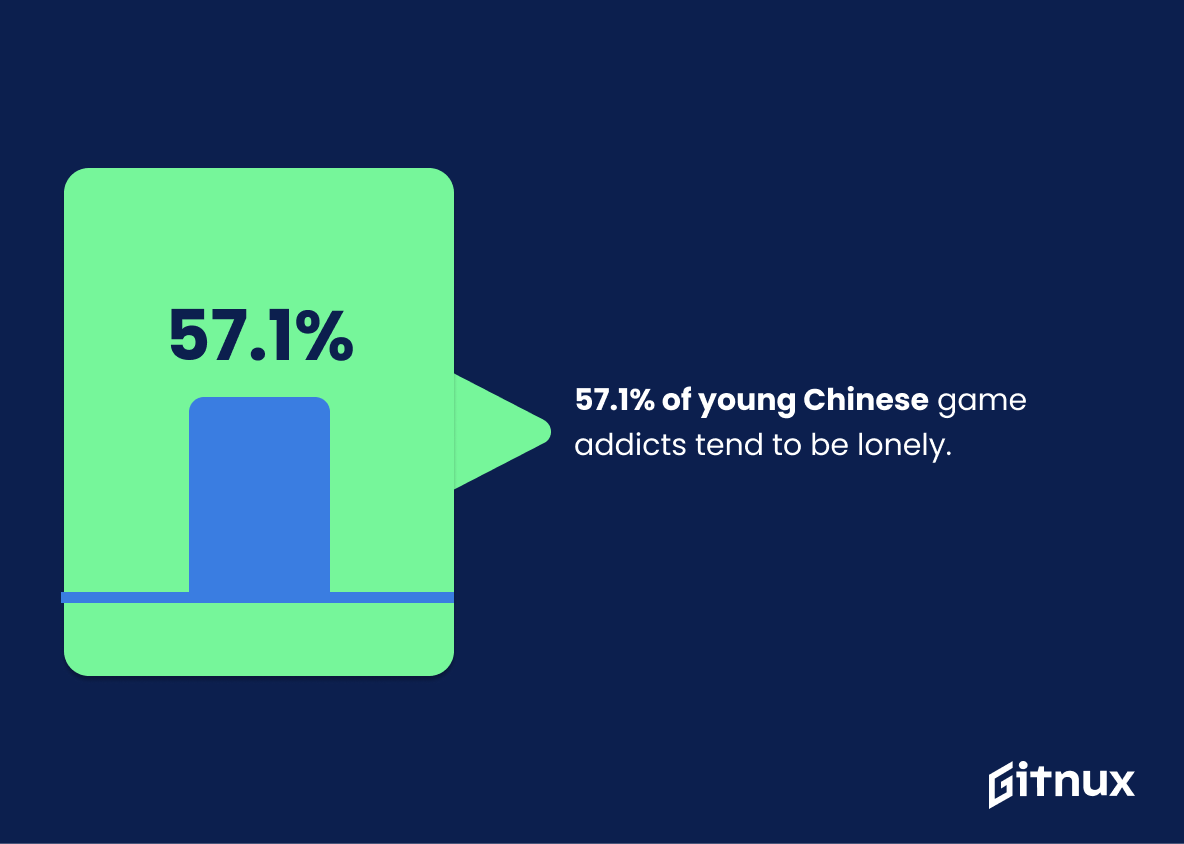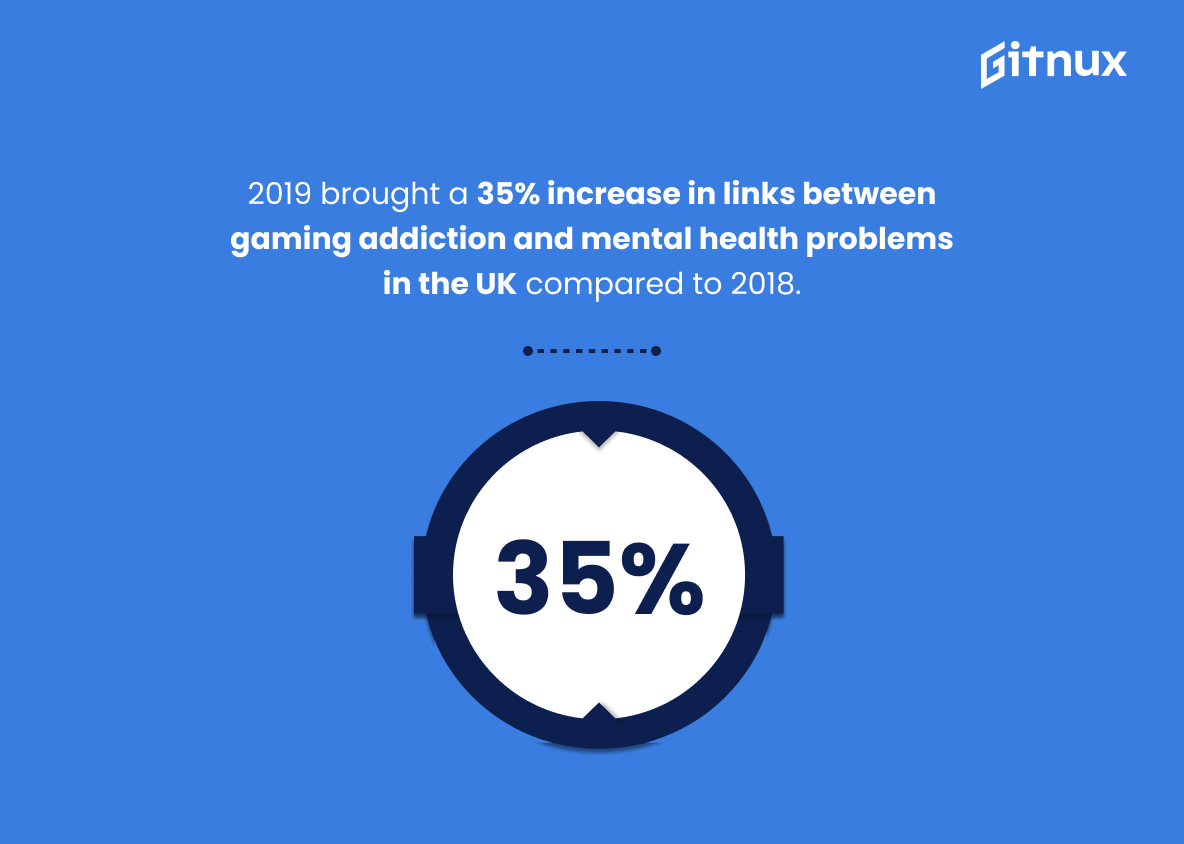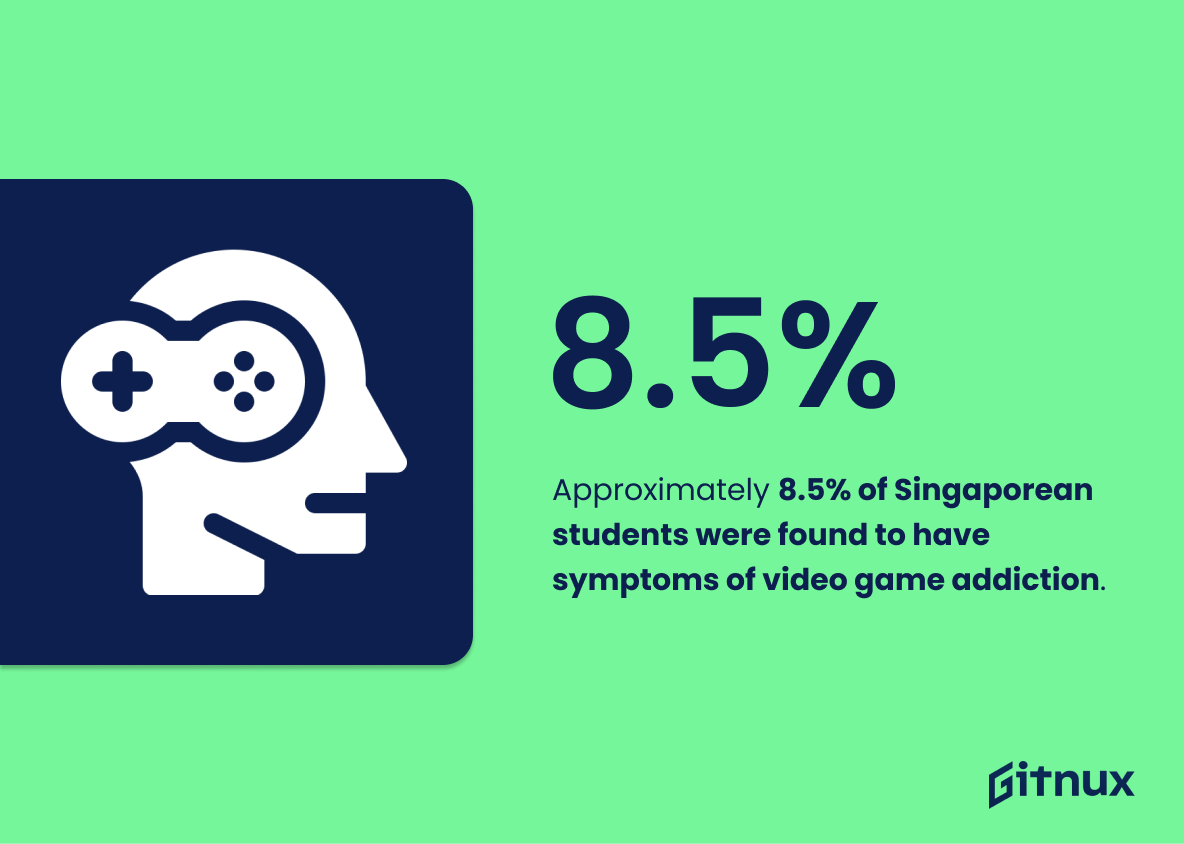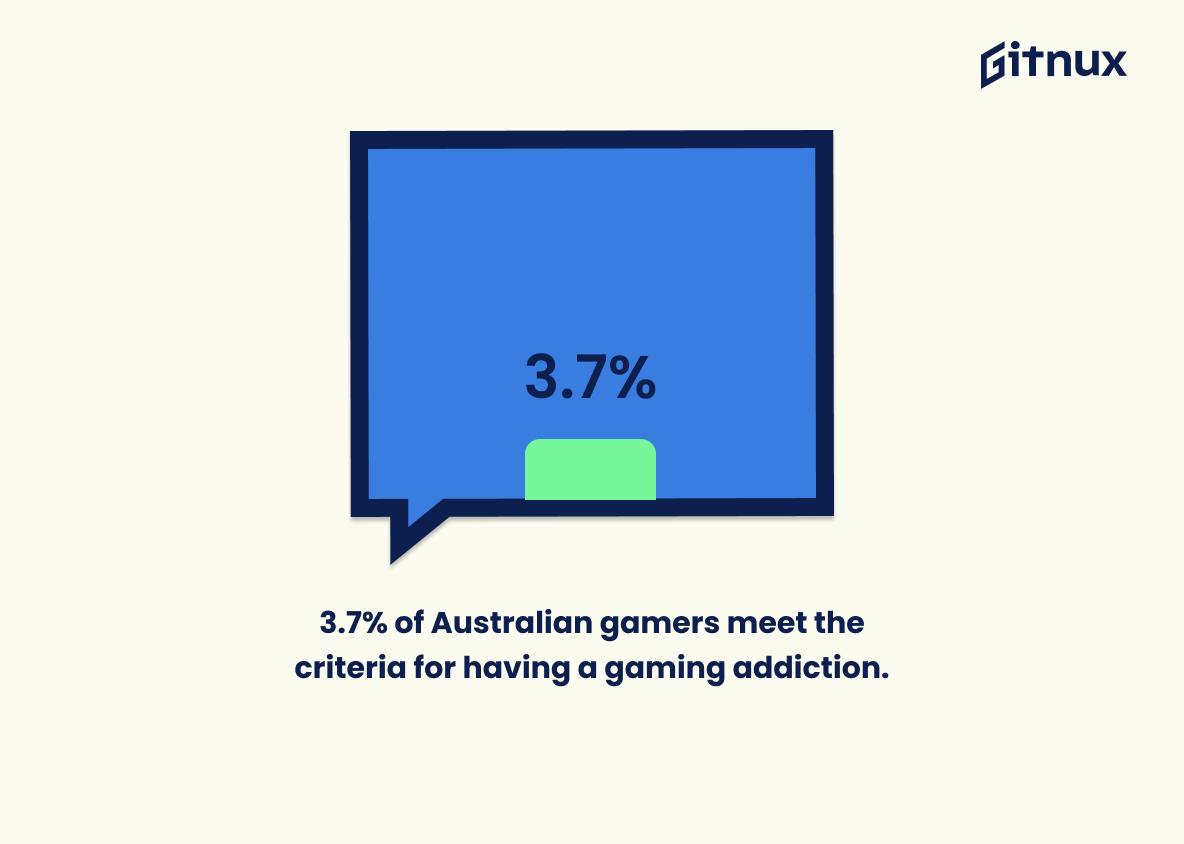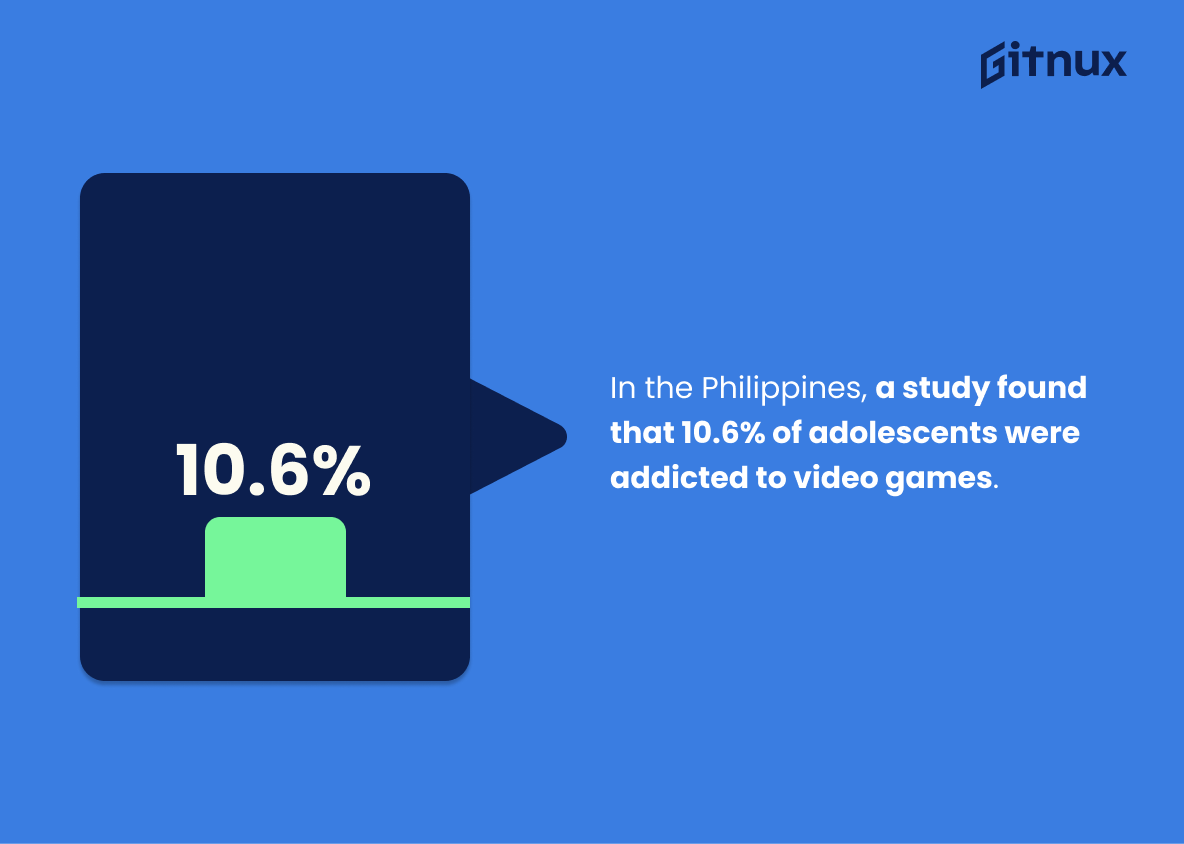Video game addiction is a growing problem around the world, with statistics showing that 84% of video game addicts are male and 16% female. Approximately 9% of video game players have an addictive behavior, while 12.5% of children and adolescents in the United States are addicted to video games. In Indonesia, 8.3%, Norway 4%, South Korea 10%, Iran 34.8%, Germany 1%, Netherlands 3.3 % and Philippines 10.6%. On average American gamers spend 6 hours per week playing video games; Chinese 57%; Japanese 70%; Singaporean 8-9%; Australian 3-4%. Indian gamers spent an average of 8 hours per week playing online games; Filipino students 13 hours weekly on gaming activities; UK 35 percent increase in links between gaming addiction & mental health problems compared to 2018 year . Online Game Addicts are three times more likely to experience sleep disorders than non-gamers according to BBC news report from 2014 year .
Game Addiction Statistics Overview
12.5% of children and adolescents in the United States are addicted to video games.
This statistic is a stark reminder of the prevalence of video game addiction among children and adolescents in the United States. It highlights the need for parents and educators to be aware of the potential risks associated with excessive gaming and to take steps to ensure that young people are not becoming addicted to video games.
In a study, 8.3% of the Indonesian schoolchildren were found to be addicted to video games.
This statistic is a stark reminder of the prevalence of video game addiction among Indonesian schoolchildren. It serves as a wake-up call to parents, educators, and policy makers to take action and address this growing problem.
On average, American gamers spend 6.3 hours per week playing video games.
This statistic is a telling indication of the amount of time that American gamers are dedicating to video games. It serves as a reminder that gaming can be a significant part of people’s lives, and that it is important to be aware of the potential risks associated with excessive gaming.
Approximately 4% of Norwegian gamers were considered addicted.
This statistic is a powerful indicator of the prevalence of game addiction in Norway, demonstrating that even in a country with a relatively low rate of addiction, it is still a problem that needs to be addressed. It serves as a reminder that game addiction is a global issue, and that no country is immune to its effects.
Online game addicts are 3.5 times more likely to experience sleep disorders.
This statistic is a stark reminder of the potential consequences of game addiction. It highlights the fact that game addiction can have a serious impact on one’s physical health, as well as their mental health. It is a warning to those who may be at risk of developing an addiction to online gaming, and a reminder to those who are already addicted to take steps to address their problem.
In a study, 34.8% of Iranian students showed symptoms of internet gaming disorder.
This statistic is a stark reminder of the prevalence of internet gaming disorder among Iranian students. It highlights the need for greater awareness and education about the potential risks of gaming addiction, as well as the need for more effective prevention and treatment strategies.
1% of German adolescents met the diagnostic criteria for gaming addiction.
This statistic is a stark reminder of the prevalence of gaming addiction among German adolescents. It serves as a warning that gaming addiction is a real issue that needs to be addressed, and that it is not something to be taken lightly. It is a call to action for parents, educators, and healthcare professionals to be aware of the signs of gaming addiction and to take steps to prevent it from occurring.
Around 3.3% of Dutch youth were found to be addicted to video games.
This statistic is a stark reminder of the prevalence of video game addiction among Dutch youth. It serves as a warning that this issue is not to be taken lightly, and that steps must be taken to address it. It also highlights the need for further research into the causes and effects of video game addiction, so that effective solutions can be developed.
57.1% of young Chinese game addicts tend to be lonely.
This statistic is a telling indication of the potential emotional consequences of game addiction among young Chinese people. It suggests that the majority of those affected by this issue are not only struggling with the physical and mental effects of addiction, but also with feelings of loneliness and isolation. This is an important factor to consider when discussing the prevalence and effects of game addiction.
2019 brought a 35% increase in links between gaming addiction and mental health problems in the UK compared to 2018.
This statistic is a stark reminder of the growing prevalence of gaming addiction and its associated mental health problems in the UK. It highlights the need for greater awareness and understanding of the issue, as well as the need for more effective strategies to tackle it. This is especially pertinent in the context of a blog post about game addiction statistics, as it serves to emphasize the importance of the topic and the need for further research and discussion.
Approximately 8.5% of Singaporean students were found to have symptoms of video game addiction.
This statistic is a stark reminder of the prevalence of video game addiction among Singaporean students. It serves as a wake-up call to parents, educators, and policy makers to take the necessary steps to address this issue. It also highlights the need for more research to be done in order to better understand the causes and effects of video game addiction.
3.7% of Australian gamers meet the criteria for having a gaming addiction.
This statistic is a stark reminder of the prevalence of gaming addiction in Australia. It highlights the need for greater awareness and understanding of the issue, as well as the need for more effective prevention and treatment strategies. It is a call to action for those in the gaming industry, as well as for parents, educators, and health professionals, to take steps to ensure that gaming remains a healthy and enjoyable activity for all.
Indian gamers spent an average of 8.6 hours per week playing video games.
This statistic is a telling indication of the prevalence of gaming addiction in India. It shows that Indian gamers are dedicating a significant amount of time to playing video games, which could be indicative of an unhealthy obsession with gaming. This statistic is an important piece of evidence in understanding the scope of gaming addiction in India.
In the Philippines, a study found that 10.6% of adolescents were addicted to video games.
This statistic is a stark reminder of the prevalence of video game addiction among adolescents in the Philippines. It serves as a warning to parents and guardians that they should be aware of the potential for their children to become addicted to video games and take steps to prevent it. It also highlights the need for more research into the causes and effects of video game addiction, so that effective interventions can be developed to help those affected.
Conclusion
Video game addiction is a growing problem around the world, with statistics showing that it affects people of all genders and ages. According to research, 84% of video game addicts are male while 16% are female. Approximately 9% of gamers have an addictive behavior, 12.5% of children and adolescents in the United States suffer from gaming addiction, 8.3 % Indonesian schoolchildren were found to be addicted to video games on average American gamers spend 6.3 hours per week playing video games; South Korea has estimated one in ten students being addicted; 4 % Norwegian gamers considered as having an addiction; online game addicts 3 times more likely to experience sleep disorders than non-gamers; 34 .8 percent Iranian students showed symptoms for internet gaming disorder ; 1 percent German adolescents met diagnostic criteria for gaming addictions ; 3 .3 Dutch youth were found to be addicted 57 .1 young Chinese game addicts tend lonely , 2019 brought 35 increase links between mental health problems UK compared 2018 , 13 2 hour weekly playtime among Chinese aged 10 29 years old 70 Japanese age group 10 29 additional psychiatric disorders identified medical professionals US nationally recognized disorder 8 5 Singaporean student symptomatology associated Internet Gaming Disorder 3 7 Australian gamer meet criteria having IAD 8 6 Indian players spent average hours per week Philippines study revealed 106 adolescent population suffering from Video Game Addiction These findings demonstrate how pervasive this issue is across different countries and cultures worldwide – highlighting the need for further research into prevention strategies and treatments available for those affected by this condition
References
0. – https://www.psyberguide.org
1. – https://www.telegraph.co.uk
2. – https://www.addictioncenter.com
3. – https://www.limelight.com
4. – https://www.bbc.com
5. – https://www.pubmed.ncbi.nlm.nih.gov
6. – https://www.psychguides.com
7. – https://www.arxiv.org
8. – https://www.researchgate.net
9. – https://www.ncbi.nlm.nih.gov

